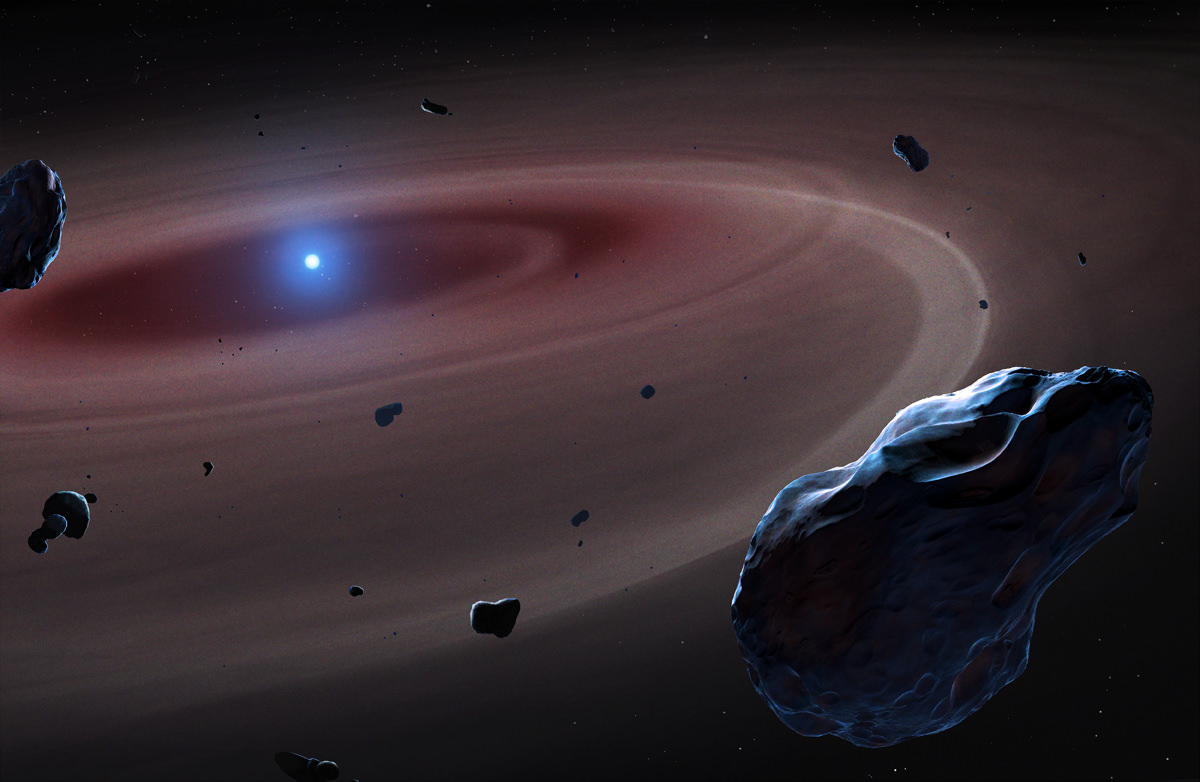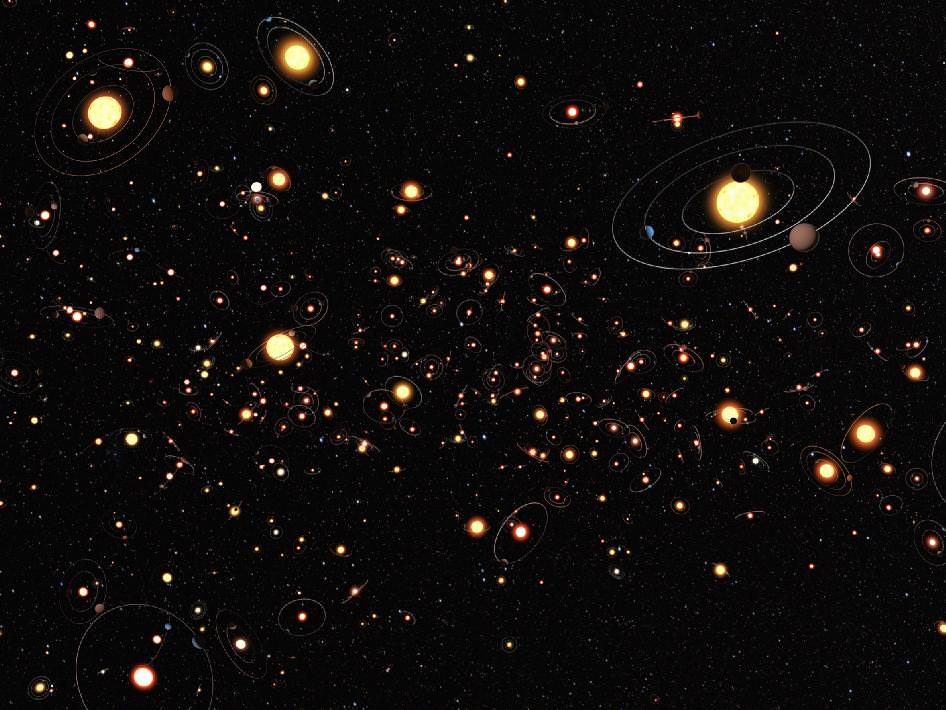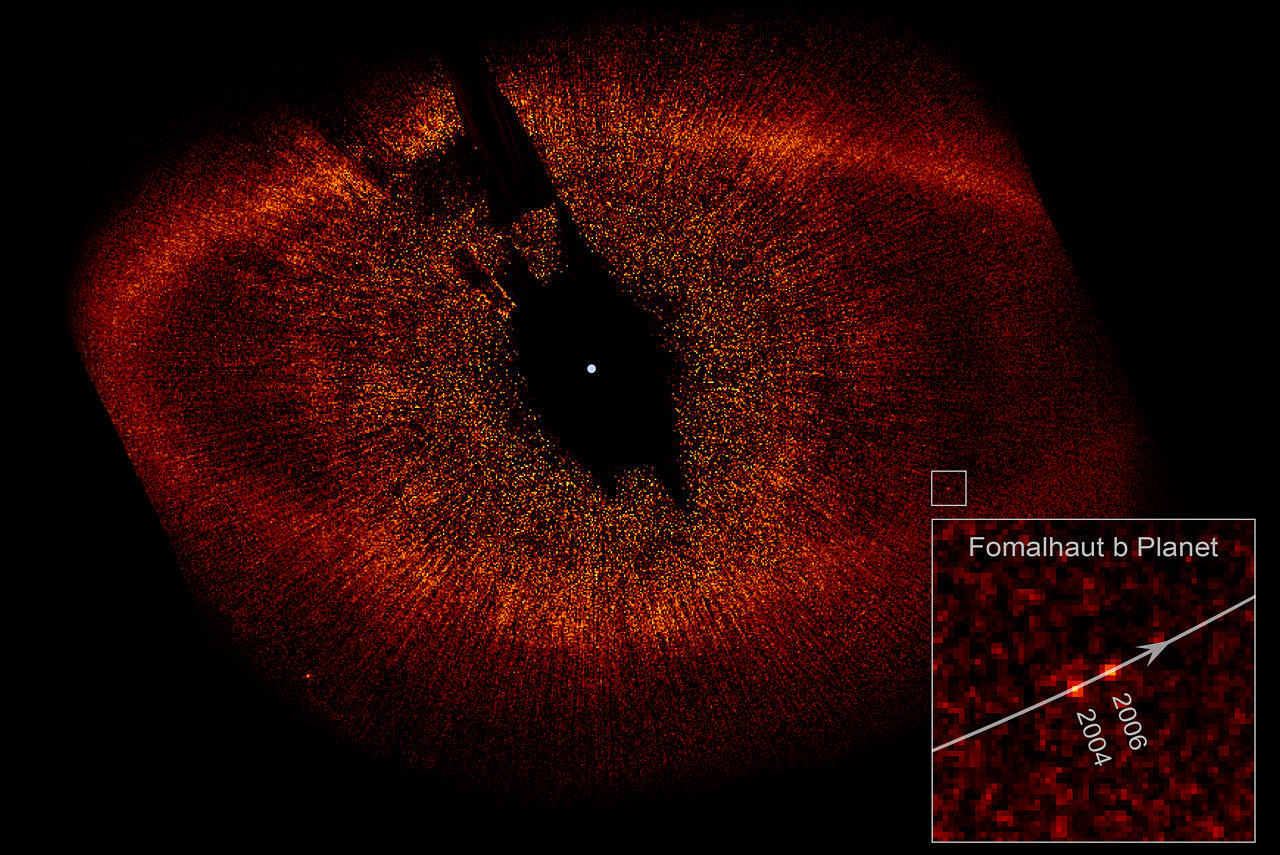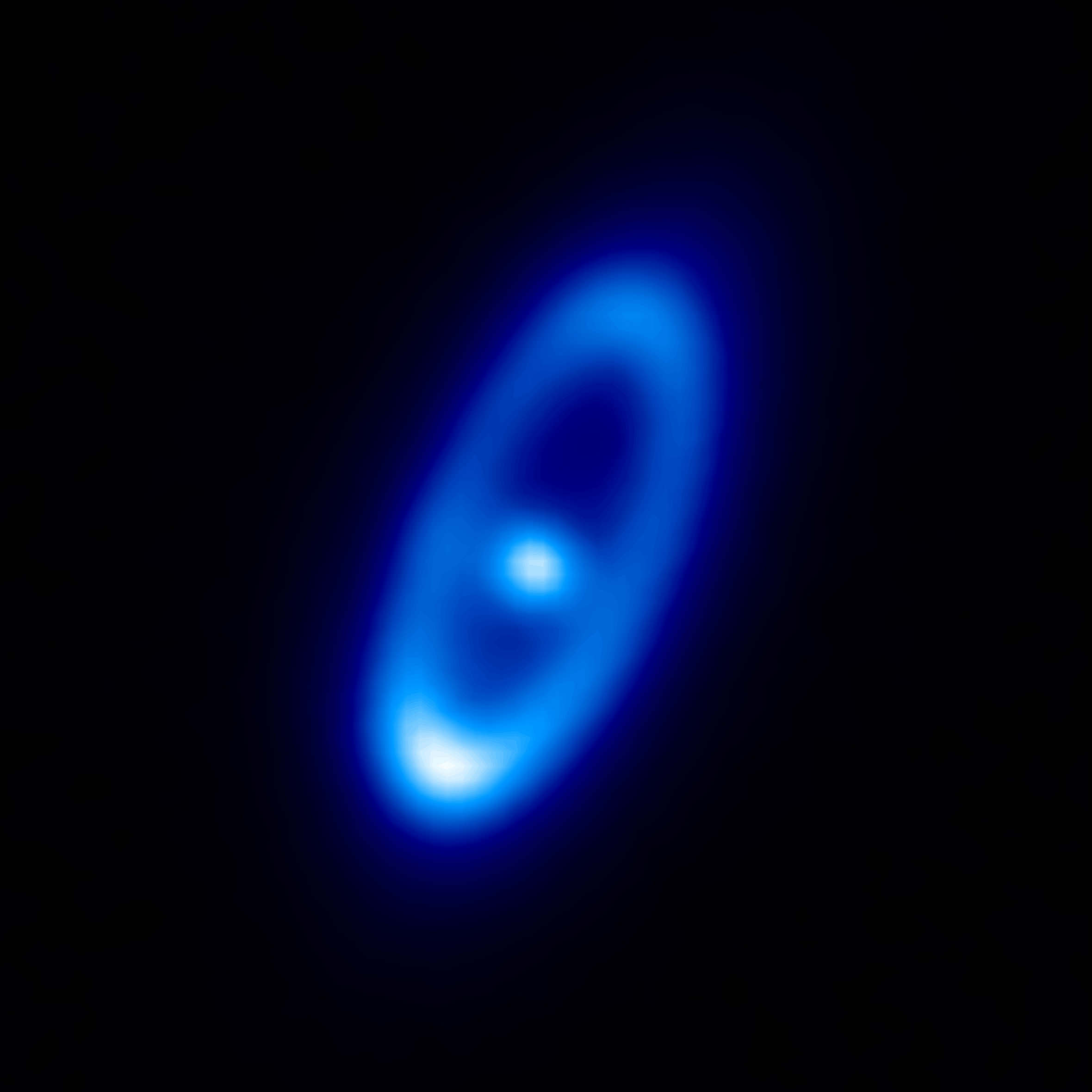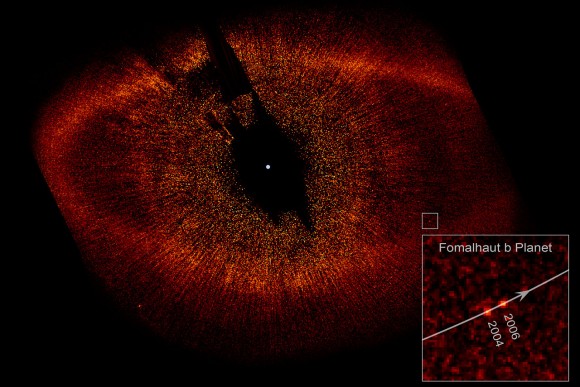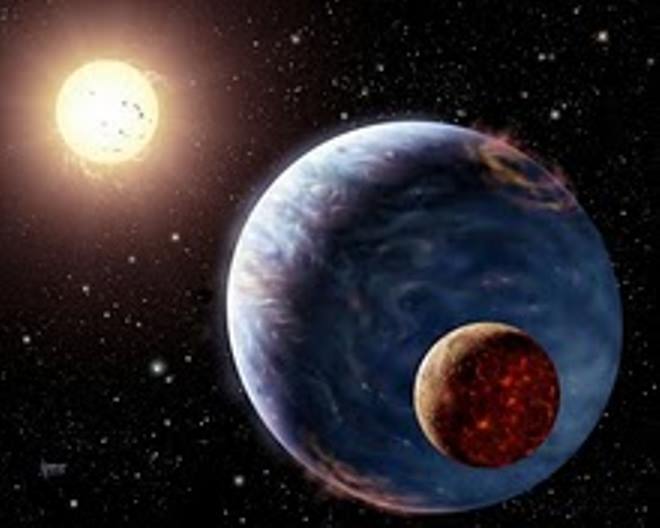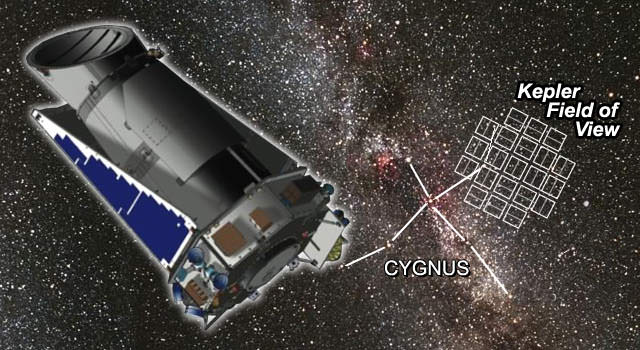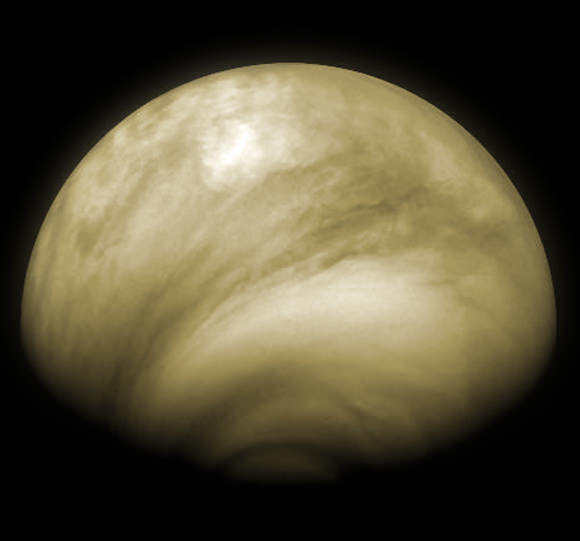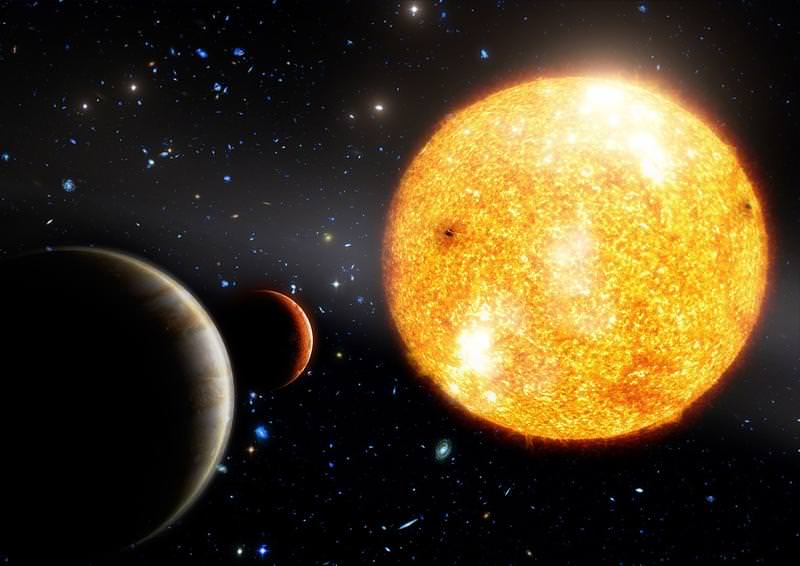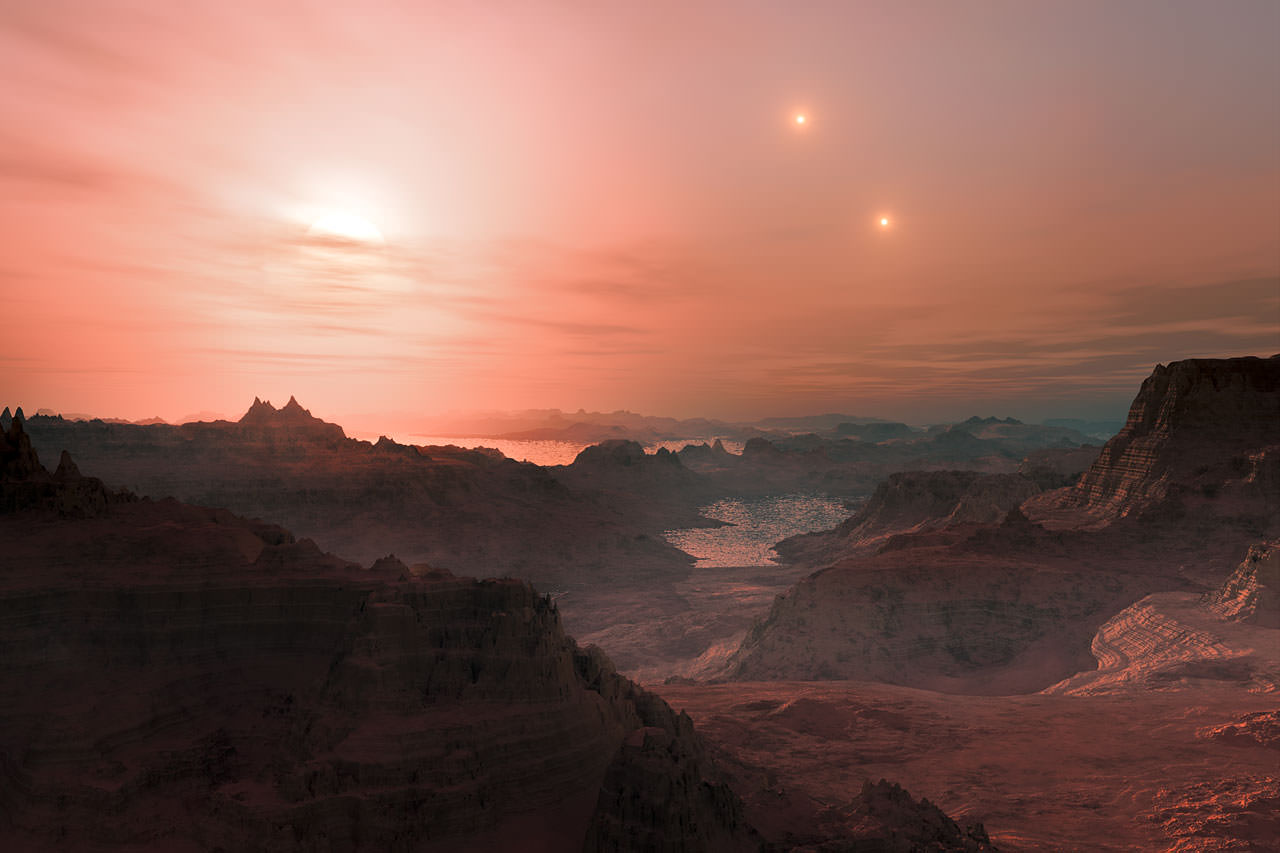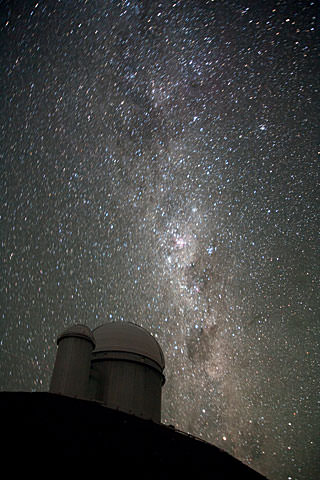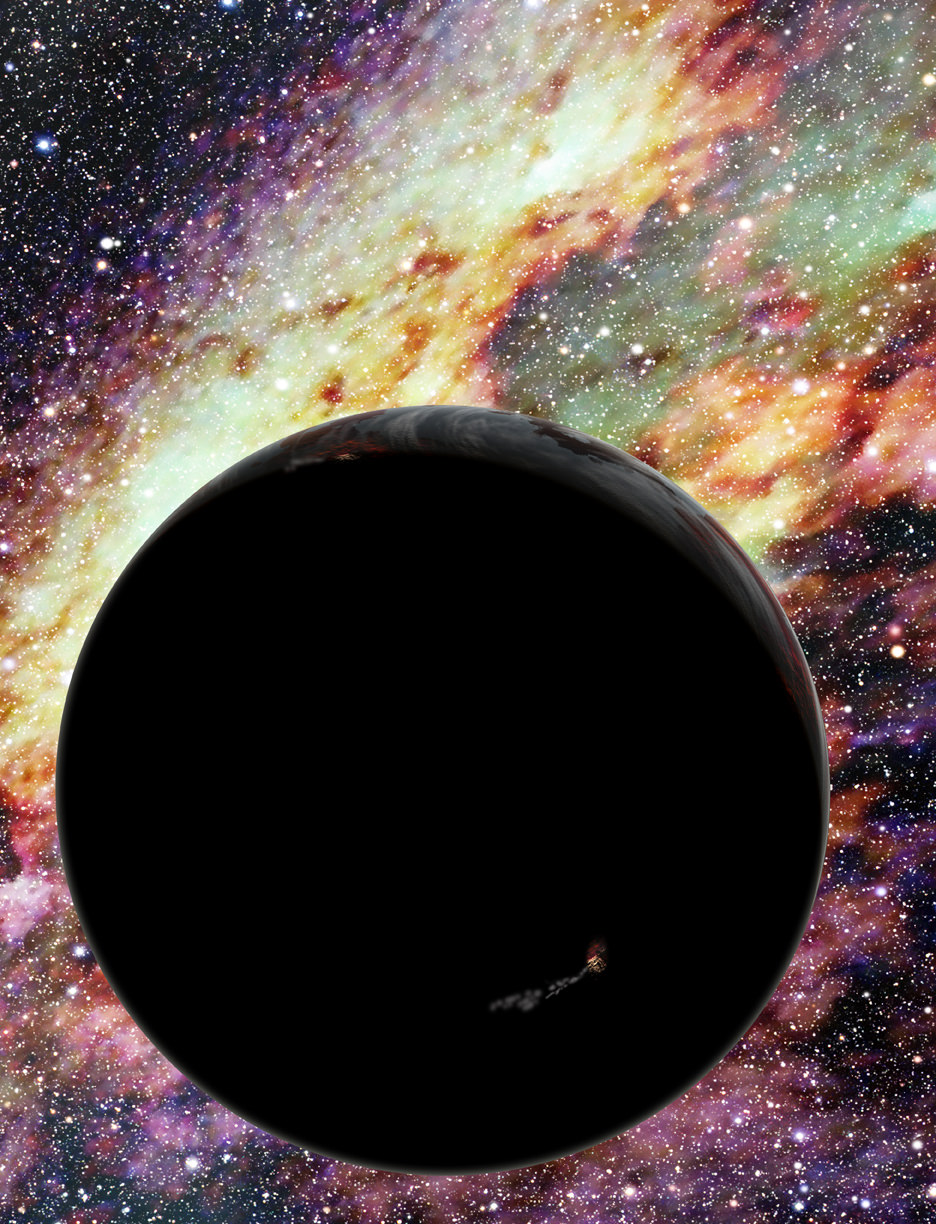[/caption]
Astronomers have found four nearby white dwarf stars surrounded by disks of material that could be the remains of rocky planets much like Earth — and one star in particular appears to be in the act of swallowing up what’s left of an Earthlike planet’s core.
The research, announced today by the Royal Astronomical Society, gives a chilling look at the eventual fate that may await our own planet.
Astronomers from the University of Warwick used Hubble to identify the composition of four white dwarfs’ atmospheres, found during a survey of over 80 such stars located within 100 light-years of the Sun. What they found was a majority of the material was composed of elements found in our own Solar System: oxygen, magnesium, silicon and iron. Together these elements make up 93% of our planet.
In addition, a curiously low ratio of carbon was identified, indicating that rocky planets were at one time in orbit around the stars.
Since white dwarfs are the leftover cores of stellar-mass stars that have burnt through all their fuel, the material in their atmosphere is likely the leftover bits of planets. Once held in safe, stable orbits, when their stars neared the ends of their lives they expanded, possibly engulfing the innermost planets and disrupting the orbits of others, triggering a runaway collision effect that eventually shattered them all, forming an orbiting cloud of debris.
This could very well be what happens to our Solar System in four or five billion years.
“What we are seeing today in these white dwarfs several hundred light years away could well be a snapshot of the very distant future of the Earth,” said Professor Boris Gänsicke of the Department of Physics at the University of Warwick, who led the study. “During the transformation of the Sun into a white dwarf, it will lose a large amount of mass, and all the planets will move further out. This may destabilise the orbits and lead to collisions between planetary bodies as happened in the unstable early days of our solar systems.”
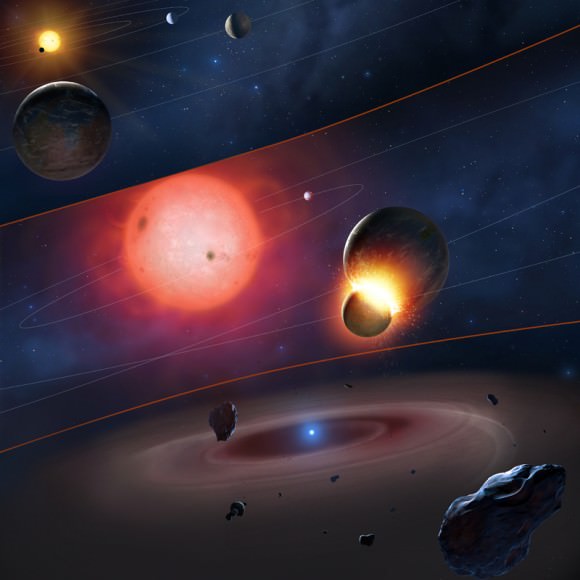
One of the white dwarfs studied, labeled PG0843+516, may even be actively eating the remains of an once-Earthlike world’s core.
The researchers identified an abundance of heavier elements like iron, nickel and sulphur in the atmosphere surrounding PG0843+516. These elements are found in the cores of terrestrial planets, having sunk into their interiors during the early stages of planetary formation. Finding them out in the open attests to the destruction of a rocky world like ours.
Of course, being heavier elements, they will be the first to be accreted by their star.
“It is entirely feasible that in PG0843+516 we see the accretion of such fragments made from the core material of what was once a terrestrial exoplanet,” Prof. Gänsicke said.
It’s an eerie look into a distant future, when Earth and the inner planets could become just some elements in a cloud.
Read the full story on the RAS site here.

